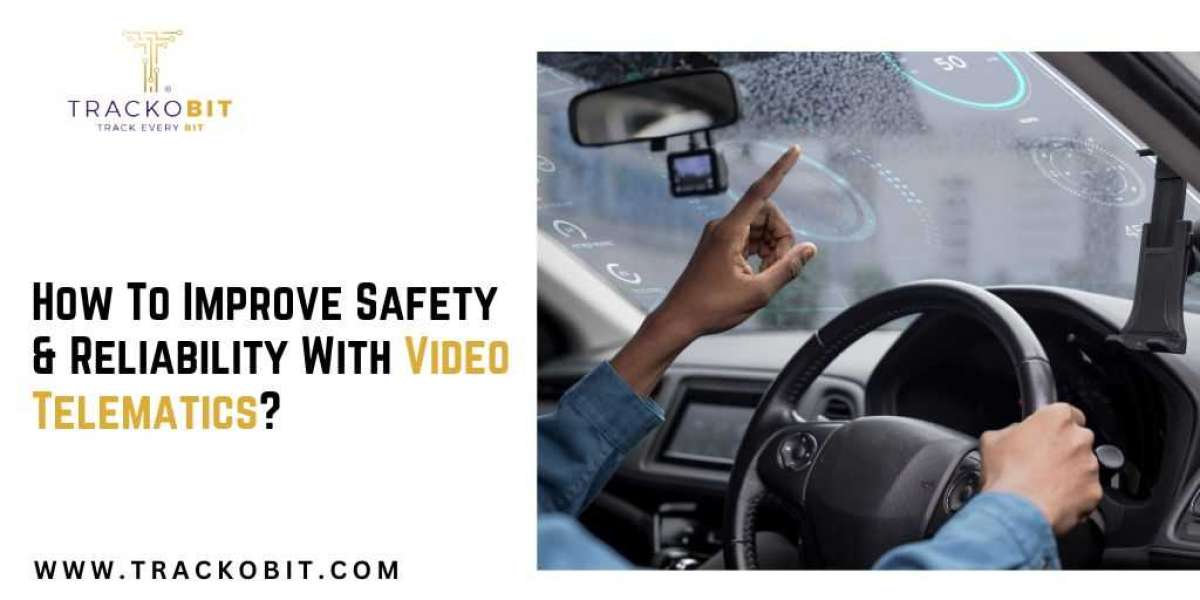According to an analysis by Berg Insight, the number of video telematics devices installed is projected to jump from 0.8 million units in 2020 to 1.8 million in 2025.
This remarkable surge in possibility reflects a growing recognition of the role of Video Telematics in enhancing fleet operations.
Through this piece, let’s take a look at video telematics solutions and explore how they can help fleet businesses improve the safety and reliability of operations.
What is Video or dash cam Telematics?
Video or dash cam telematics is a technology that combines dashboard cameras with telematics features. The dash cams record the video footage from both inside and outside of the vehicle capturing in-cabin and on-road driver behaviour patterns. From the dash cams, the captured footage is sent to the software through telematics.
This gives fleet managers the visual freedom to monitor driver activities without the need to be physically present in the vehicles. They get a chance to check the driver's performance, plan efficient routes and discuss other ways to run successful fleet operations in the long run.
Also Read: What Is Video Telematics | How Does Video Telematics Work
Components of Video Telematics
Today’s modern video telematics solutions typically comprise these basic components:
- A front-facing camera mounted on the windshield or dashboard
- A rear-facing camera that records the rear-side incidents of the vehicles
- An AI-enabled in-cabin camera
- A software for analyzing data received through Video Telematics
How does Video Telematics Improve Safety and Reliability?
Coming to the main question the article is written to answer- here are the top features of video telematics that promote safe and reliable fleet operations.
Driver Monitoring System( DMS)
DMS utilizes AI-enabled in-cabin cameras and sensors to monitor driver behaviour inside the vehicle. It constantly observes the driver's actions including facial expressions, eye movements and head position to evaluate their alertness levels.
Here are the benefits that DMS offers;
- Drowsiness Detection: DMS detects early signs of drowsiness and fatigue such as frequent yawning. Then, it issues immediate alerts to the managers. This further helps in minimizing accidents caused by driver fatigue.
- Distraction Monitoring: The system identifies distracted driver behaviour like- using smartphones while driving and triggers real-time alerts. Thus, encouraging safe driving practices and reducing the risk of accidents.
- Road-safety Compliance: DMS helps in monitoring whether the drivers follow road safety measures such as wearing seatbelts. This reinforces a culture of safety within the fleet.
- Driver training and improvement: The data that DMS collects assists fleet managers in identifying the areas of improvement and offering proper training for driver skill enhancement.
Advanced Driver Assistance System (ADAS)
ADAS uses a network of sensors in combination with the front and rear-facing cameras to monitor the driver’s on-road behaviour concerning the vehicle's surroundings.
It immediately notifies the managers of such events- as collision possibility, frequent lane switching, signal violations and overspeeding.
Here are some top benefits that ADAS offers;
- Collision Avoidance: ADAS detects potential collisions and shoots quick alerts to the managers in all types of collision possibilities- forward, rare, side. Not just the managers but it alerts the drivers too with the help of advanced collision alarms installed in the vehicle. This further helps in reducing road accidents.
- Lane Keeping Assistance: Instant lane changing alerts by ADAS help managers ensure that drivers stay in their lanes and don't engage in unauthorized lane changing. This again prevents accidents caused by unintentional lane departures.
- Adaptive Cruise Control: Through possible collision alerts, ADAS helps drivers maintain a safe distance from other vehicles on-road, encouraging safer driving.
- Blind-Spot Monitoring: In ADAS, blind spot detection is a feature that uses cameras to detect the objects in the driver’s blind spot- an area of the car’s side that the driver can’t see when looking in the rear-view or side mirror.
Read more: Video Telematics: The Future of Commercial Fleet Management Software
So, whenever another vehicle or any other object is in the driver's blind spot, ADAS quickly alerts the drivers reducing the risk of accidents.
- Visual evidence in case of accidents and thefts: The recorded video footage serves as valuable evidence in accidents or thefts. As it helps drivers get better insurance premiums.
- Enhancing driving culture: By offering real-time insights into driver behaviour, Video Telematics helps managers build more safer and accountable drivers by allowing them to identify improvement areas.
Wrapping it up!
The growing adoption of Video Telematics in the fleet industry has already established the role it plays in enhancing fleet operations. It empowers fleet managers to monitor driver behaviour, optimise routes and much more.
Its key components like ADAS and DMS also play vital roles. DMS detects driver fatigue and distractions, whereas ADAS acts as a saviour on-road.
If you are also looking to improve fleet and driver safety and the reliability of fleet operations then look no further, invest in TrackoBit Video Telematics solutions today.
Schedule a demo today!
Frequently Asked Questions (FAQs)
How can video telematics improve safety?
Video Telematics enhances safety by using advanced telematics solutions. It has two parts- Driver Monitoring Systems (DMS) and Advanced Driver Assistance Systems (ADAS). These two warriors help in monitoring driver behaviour, detecting drowsiness and distracted driving and sending real-time alerts on collision possibilities. Thus, they eventually help in improving fleet safety.
How does telematics improve fleet safety?
Combining telematics with video aids fleet managers in enhancing fleet safety. With the help of AI-enabled dashboard cameras that provide real-time data to the software and eventually to fleet managers, detecting harmful driver behaviours becomes easy and on-road safety is taken care of.
How does video telematics contribute to a better driving culture?
By offering real-time insights into driver behaviour, Video Telematics empowers fleet managers to identify better areas and foster a safer and better driving culture.
Why should I invest in TrackoBit’s Video Telematics solutions?
If you're looking to enhance fleet safety and the reliability of operations, consider investing in TrackoBit's Video Telematics solutions. Schedule a demo today to explore the benefits for your business. Get in touch with your team to know more.
Source: How To Improve Safety Reliability With Video Telematics?



